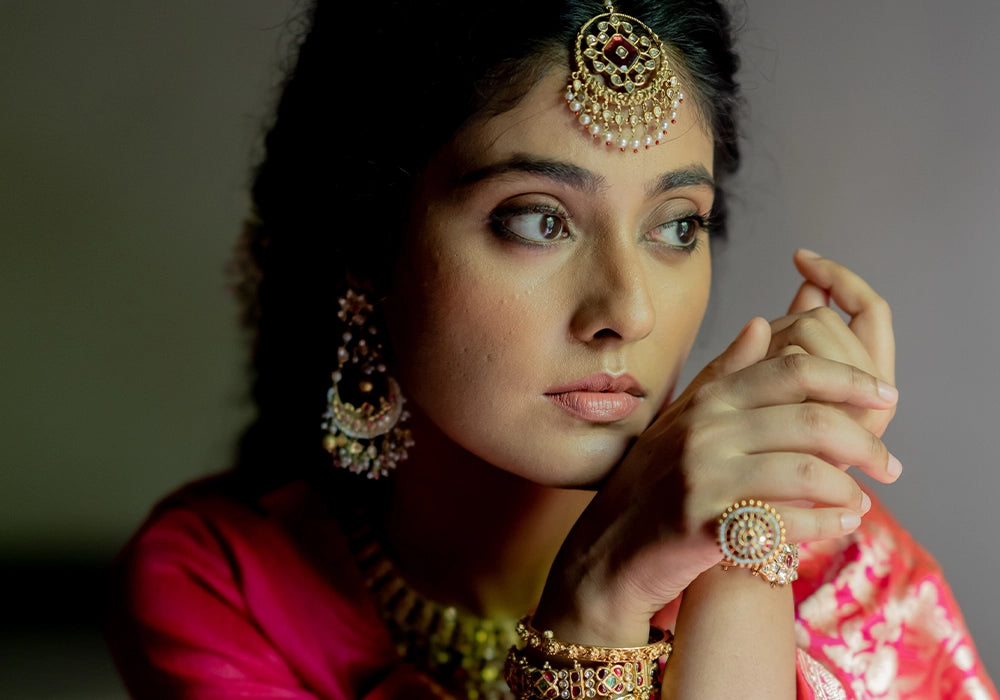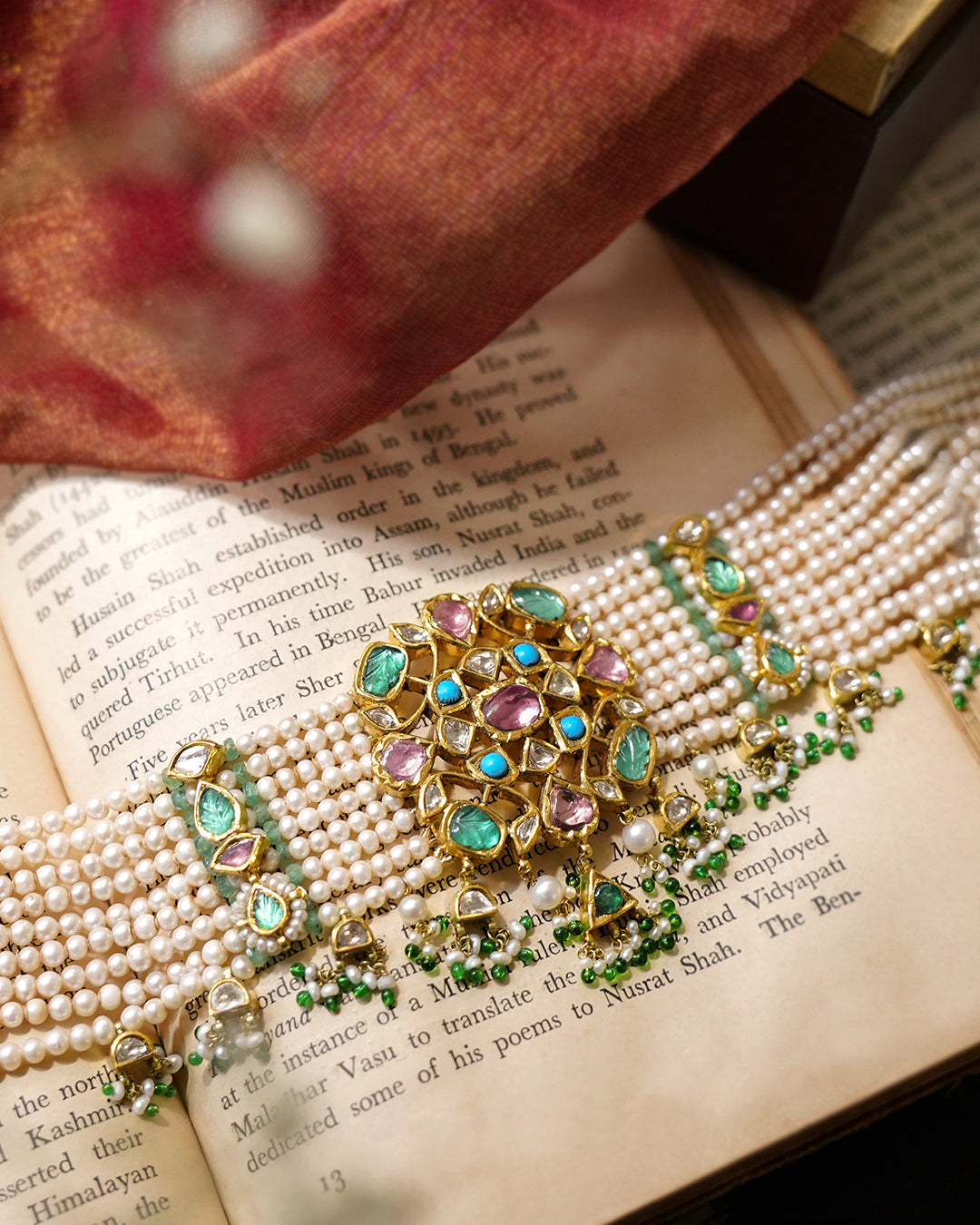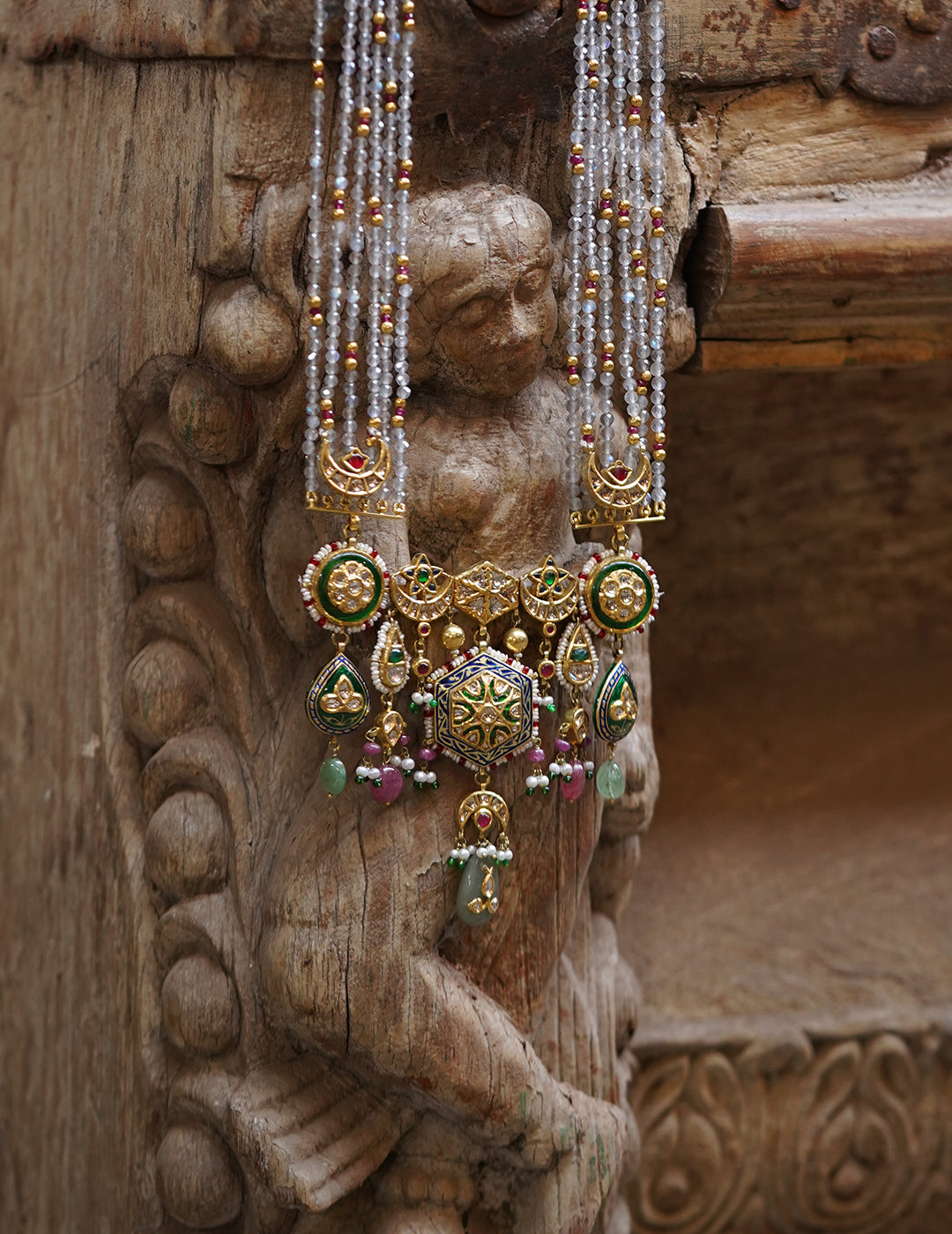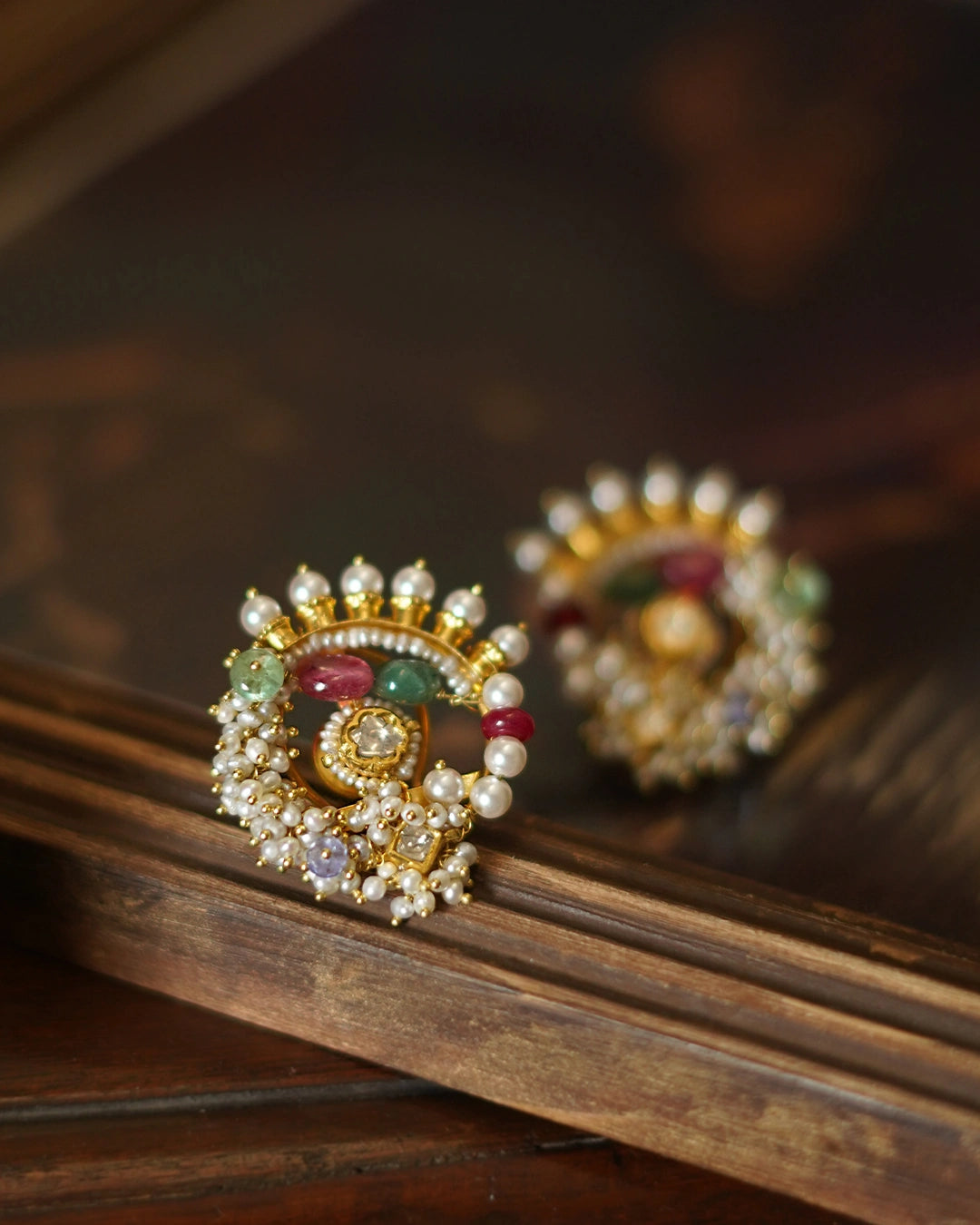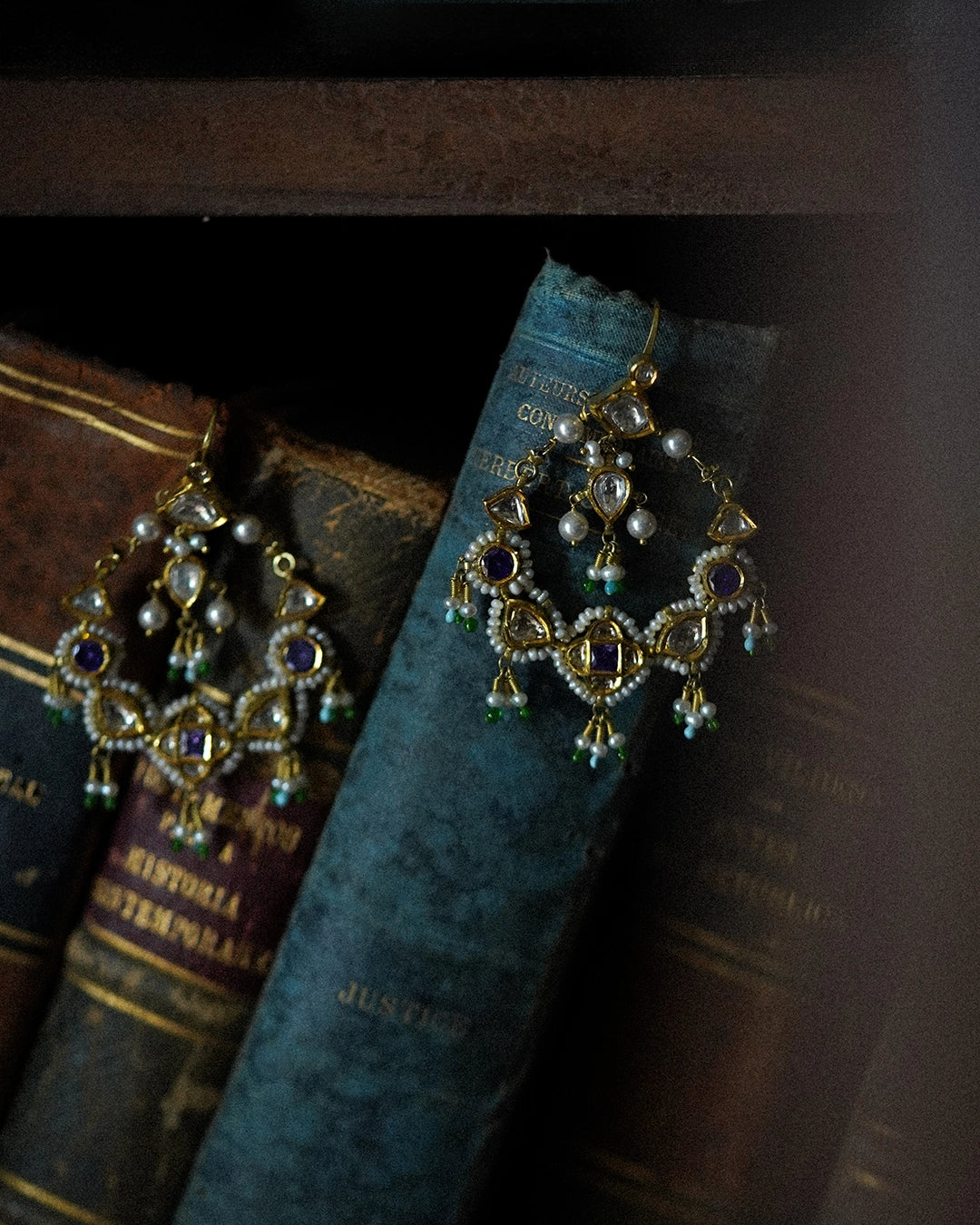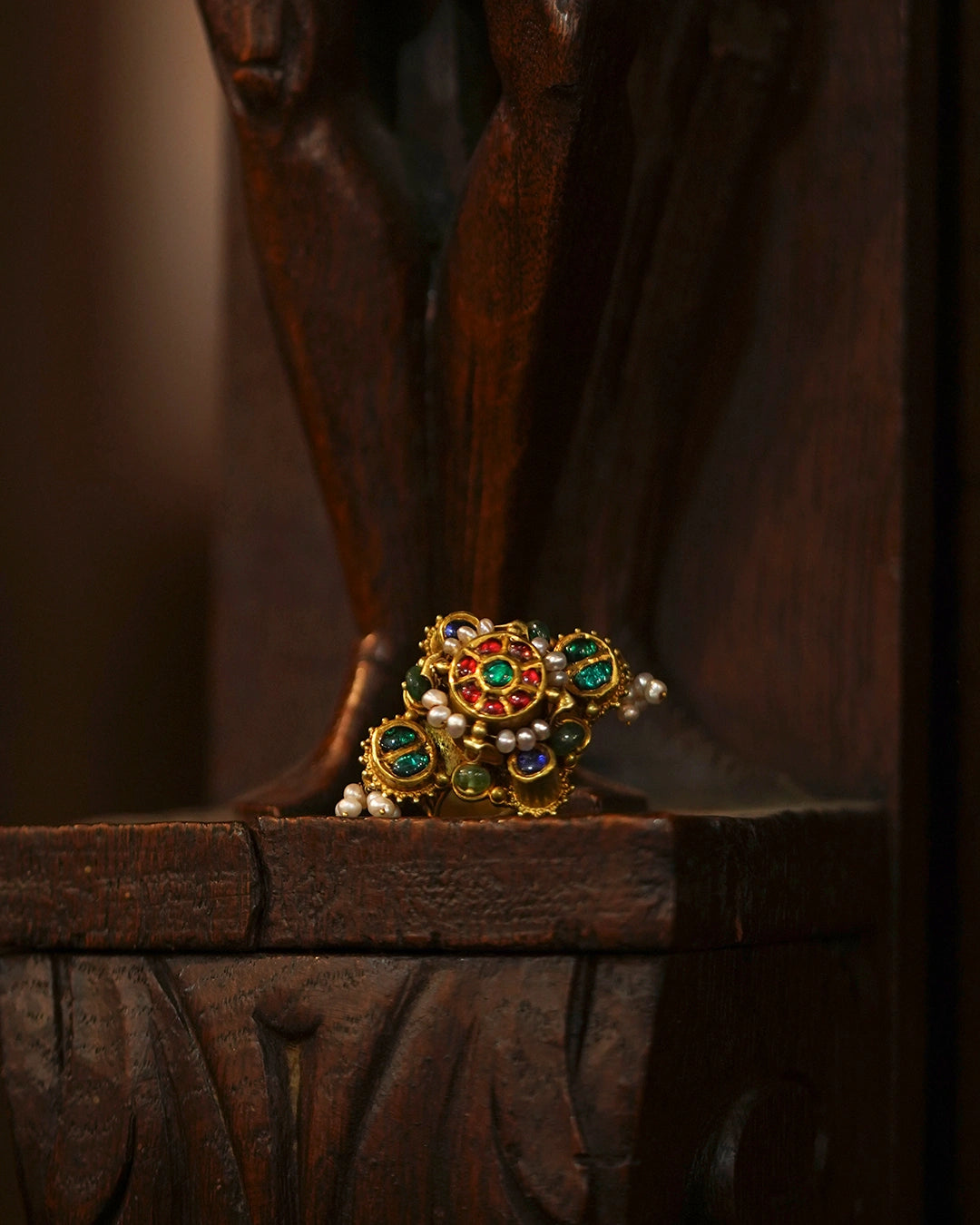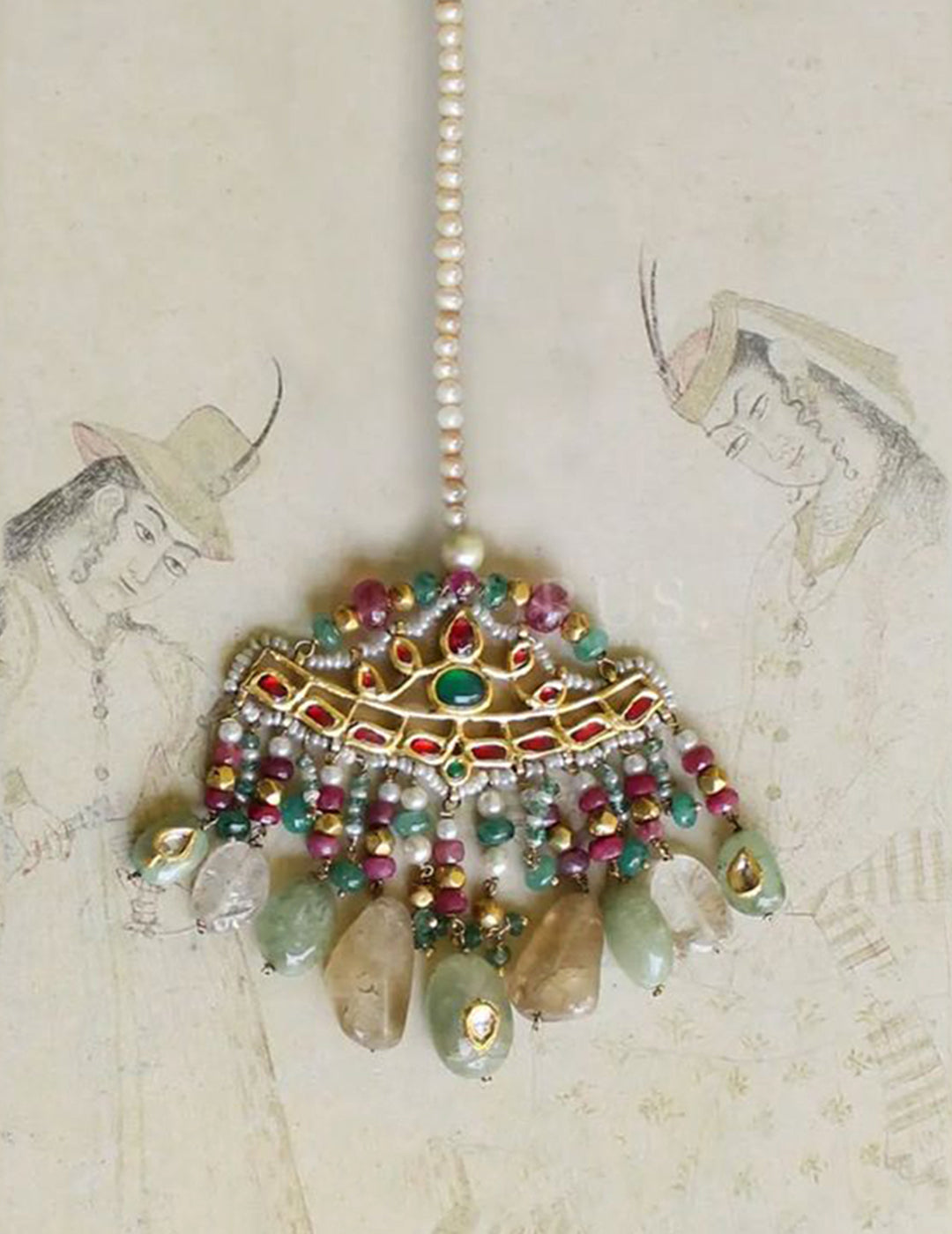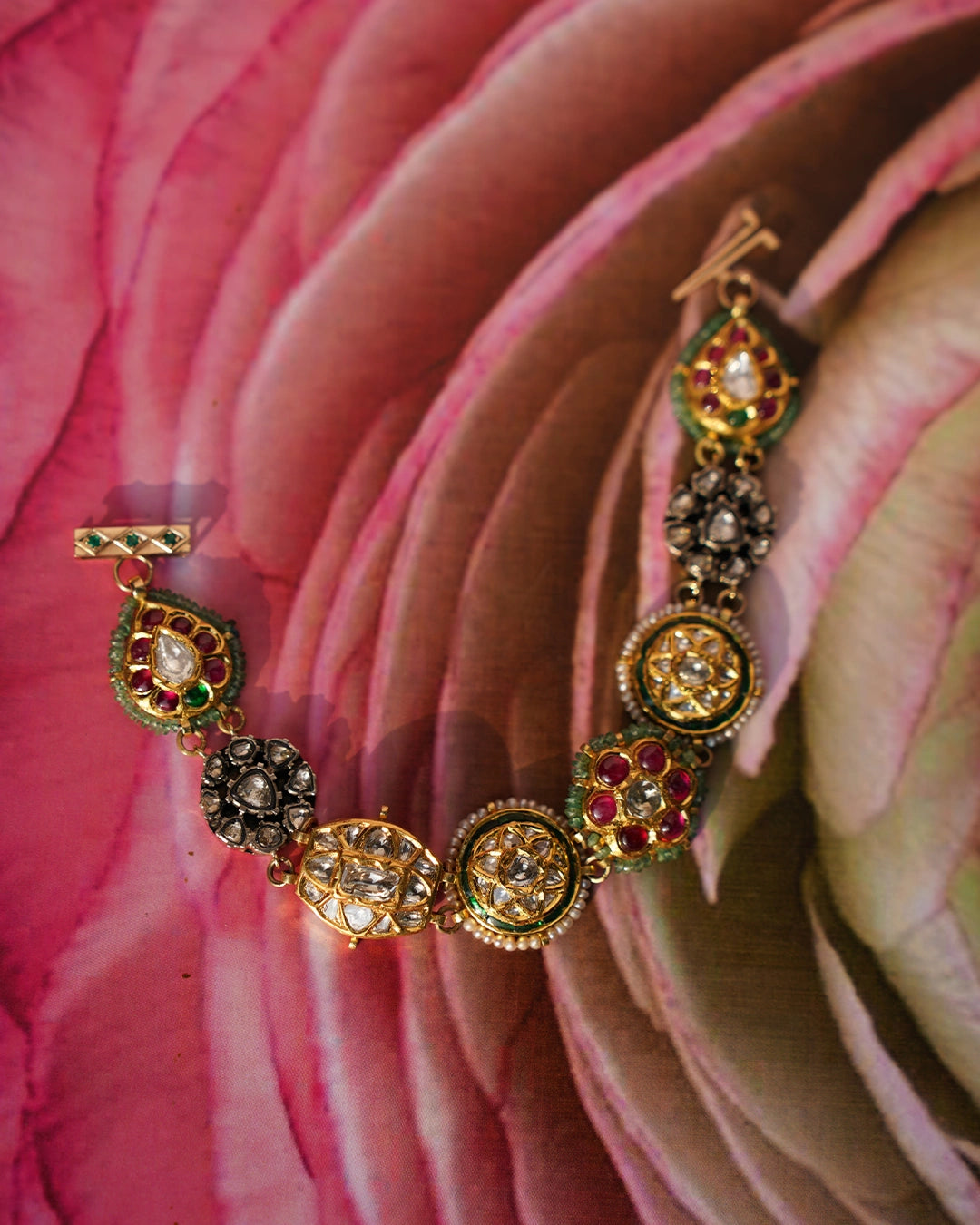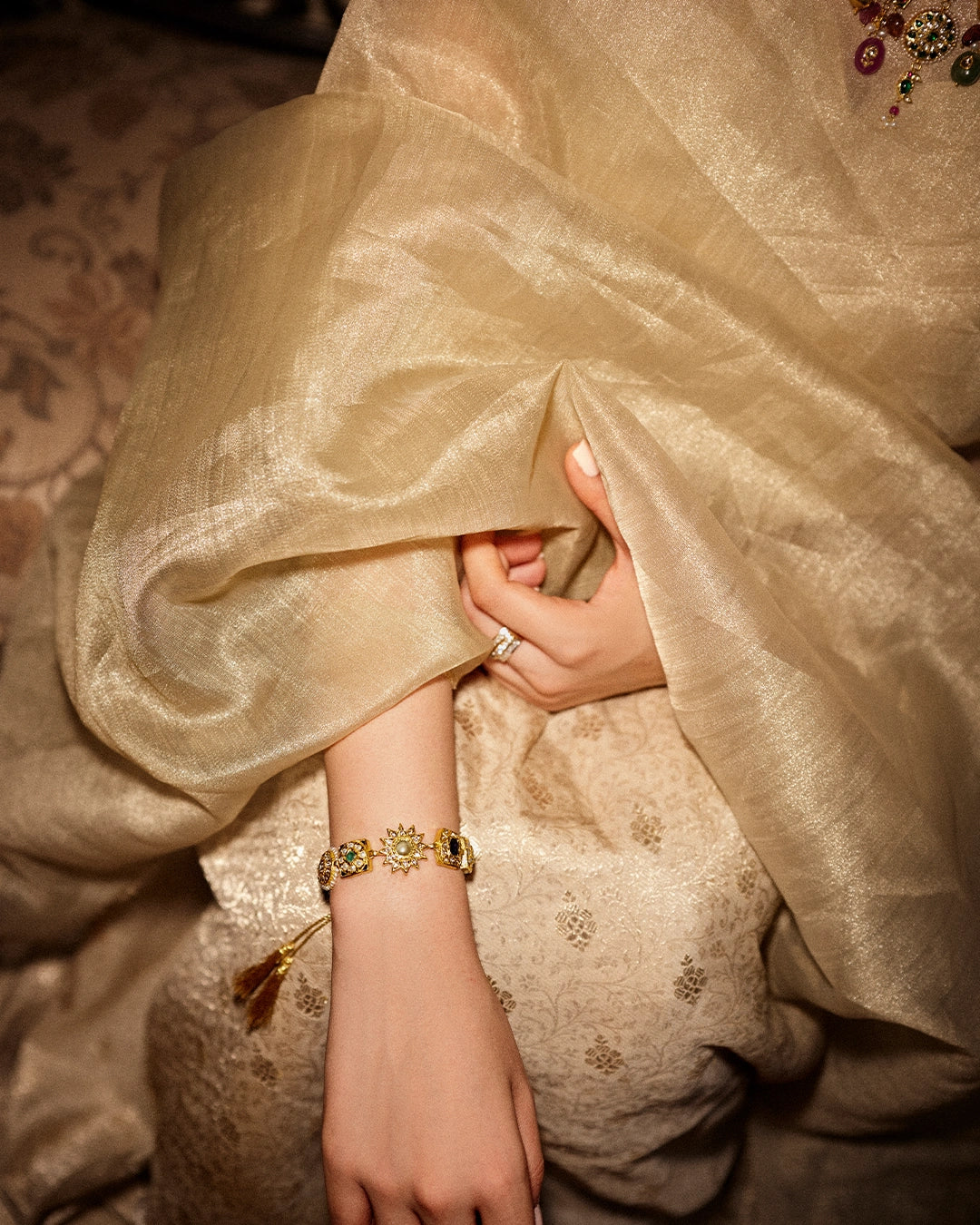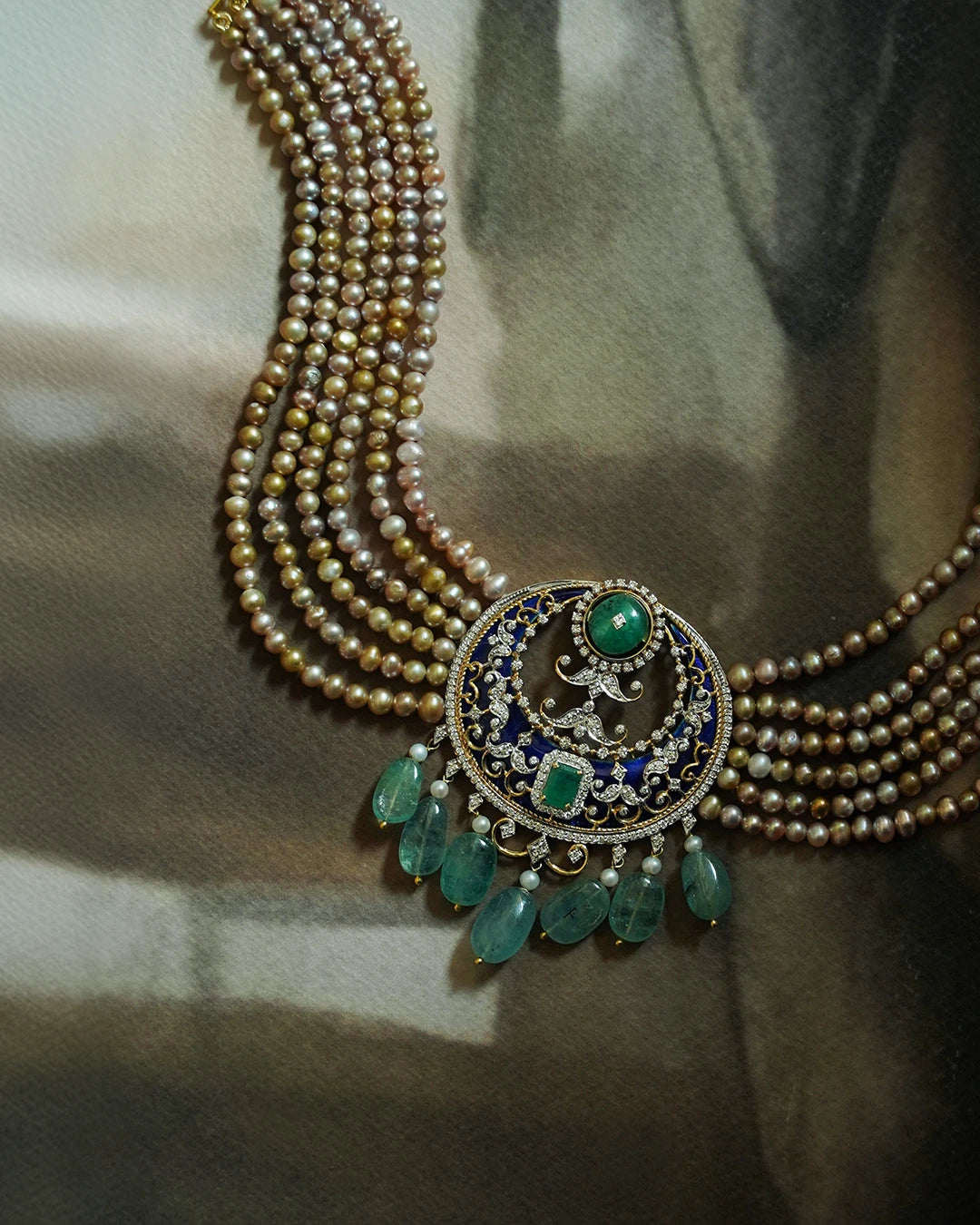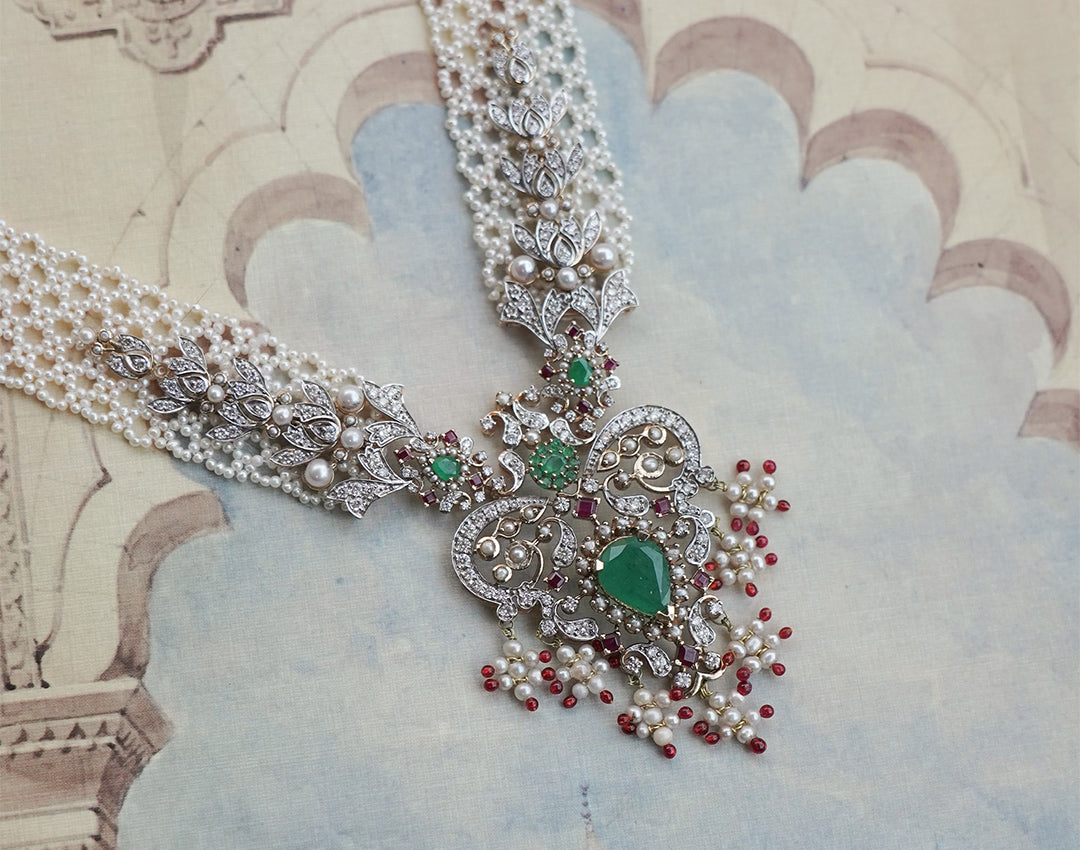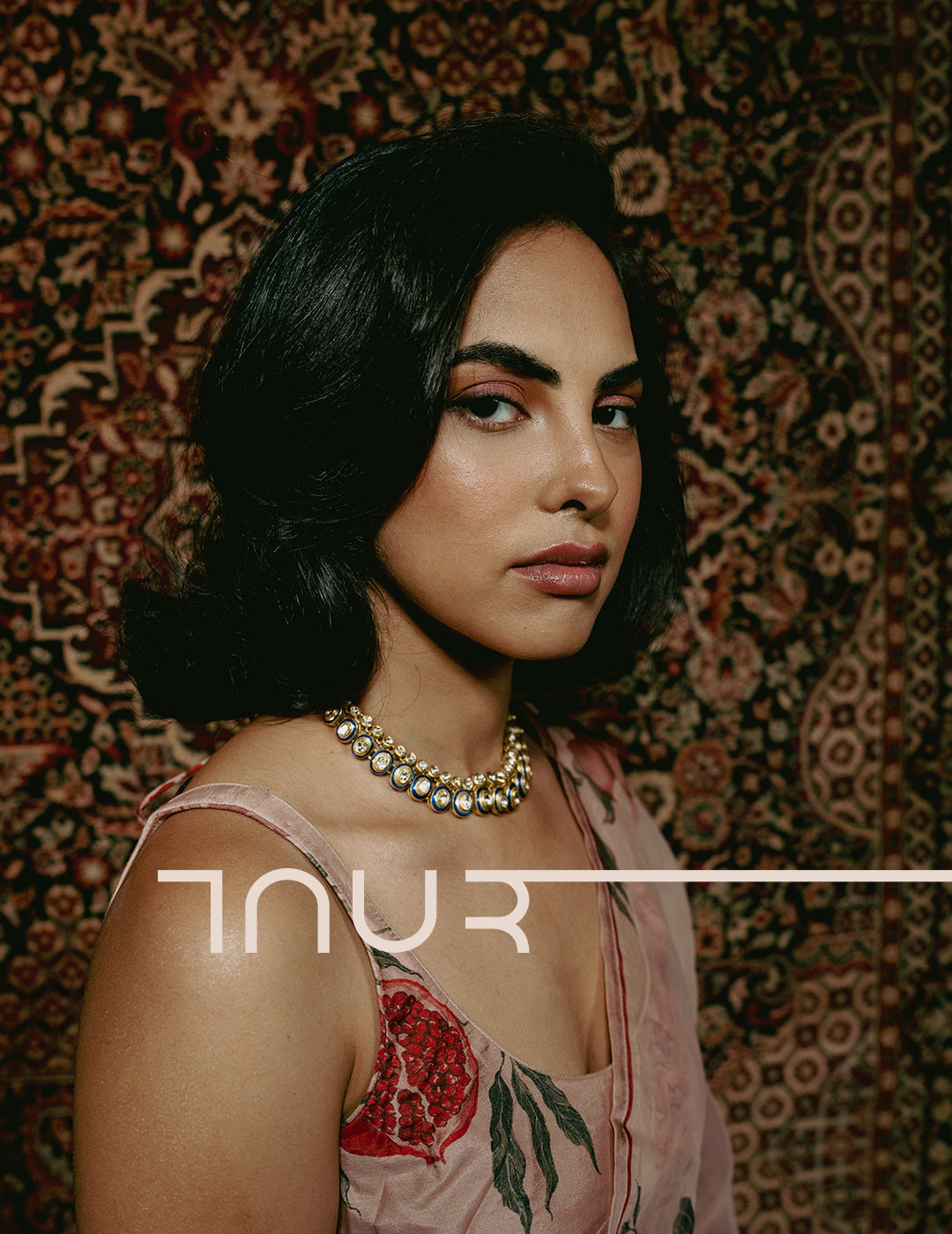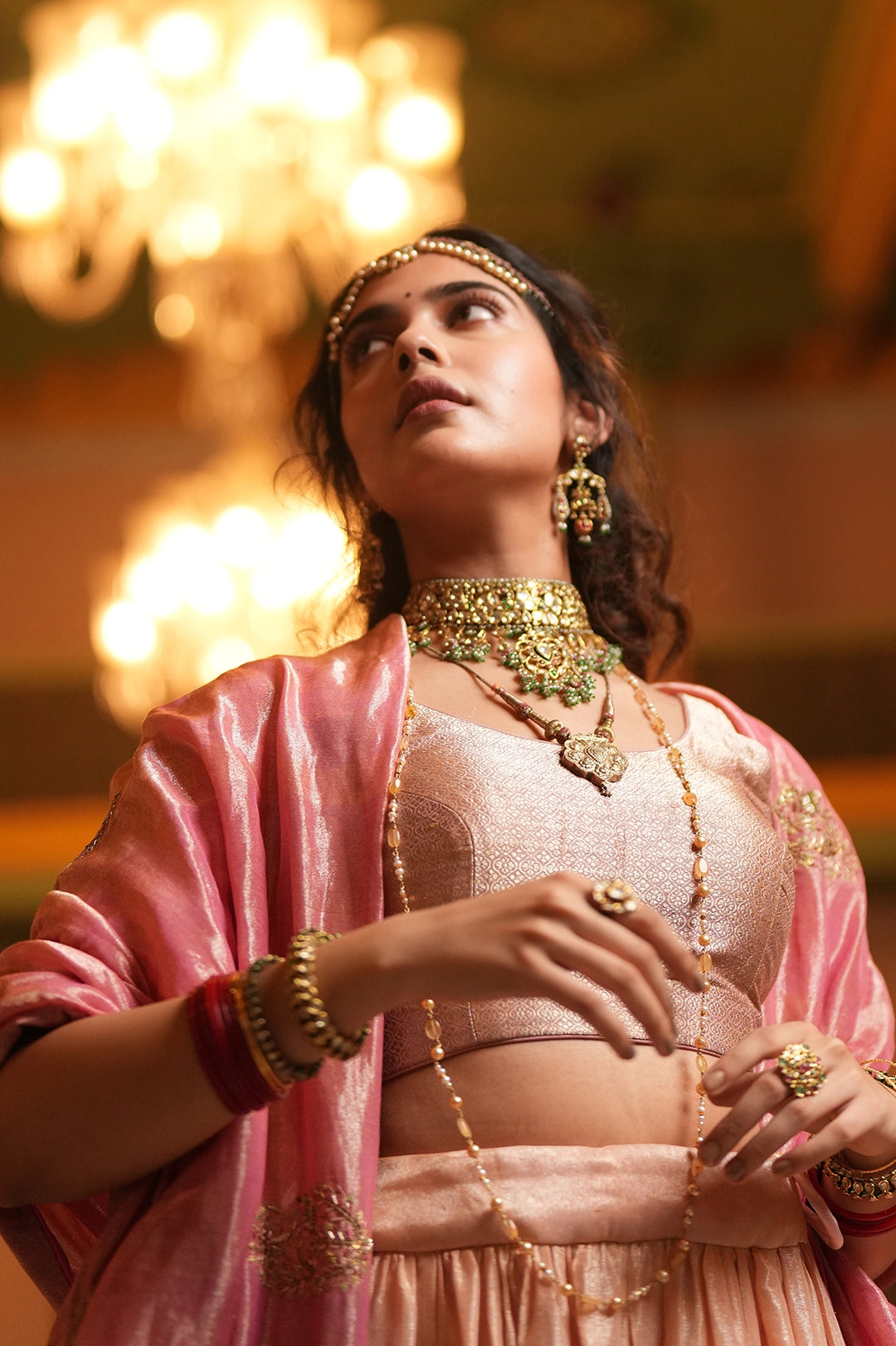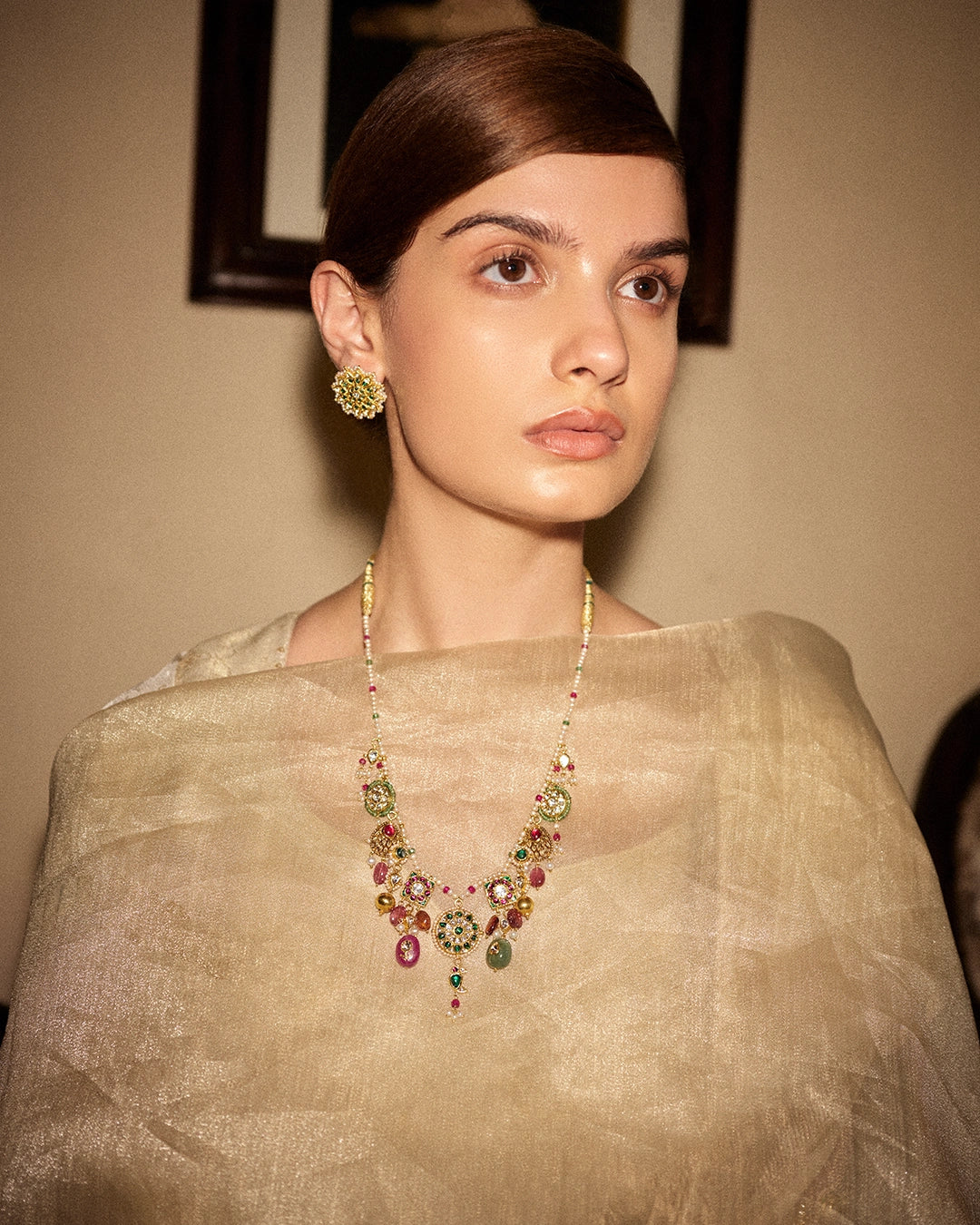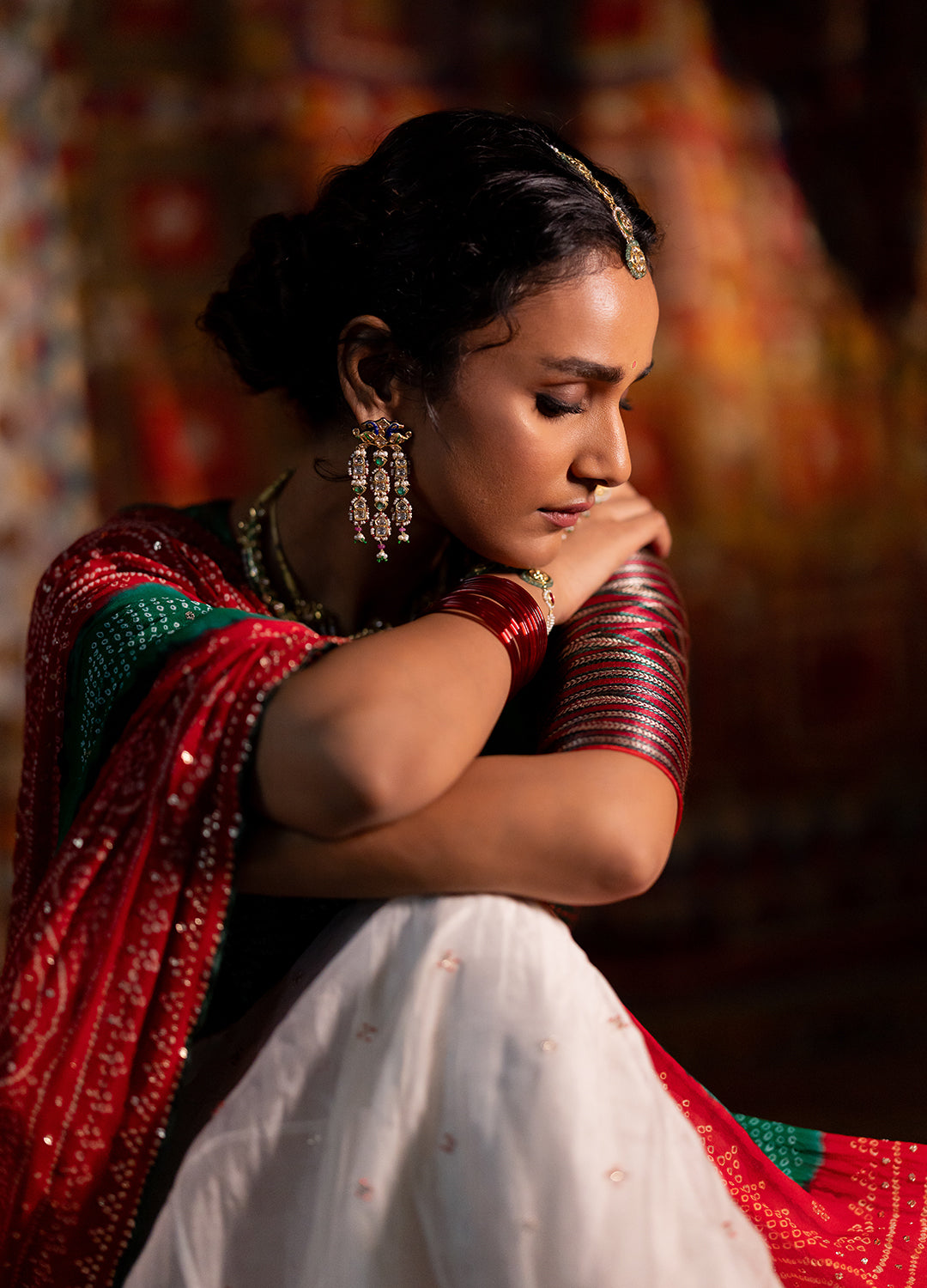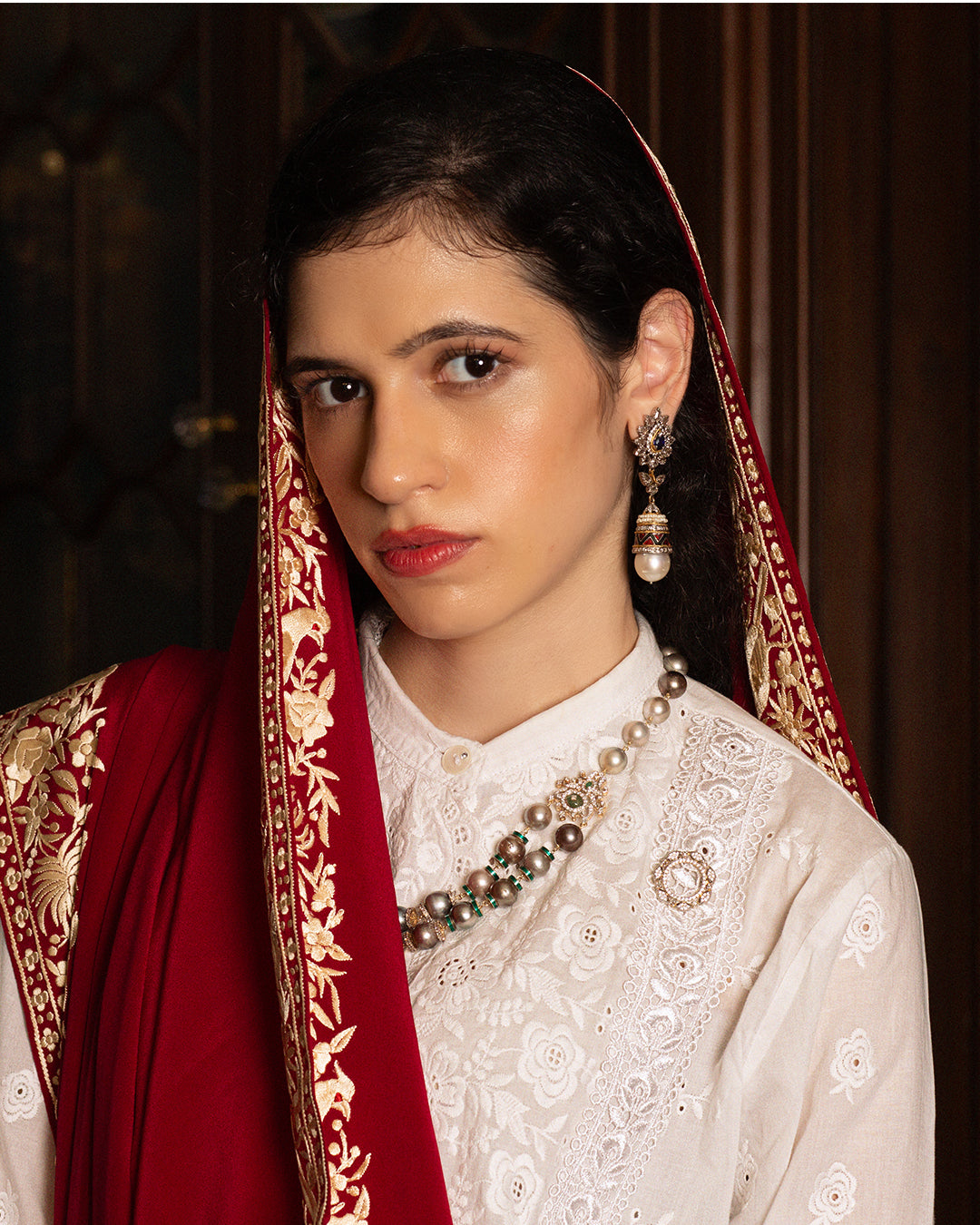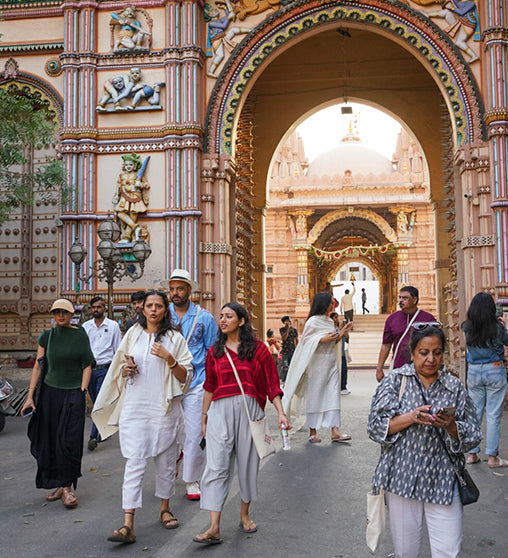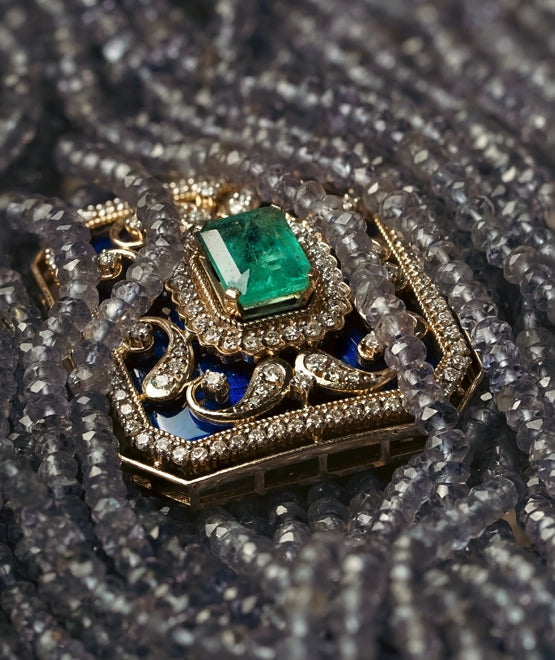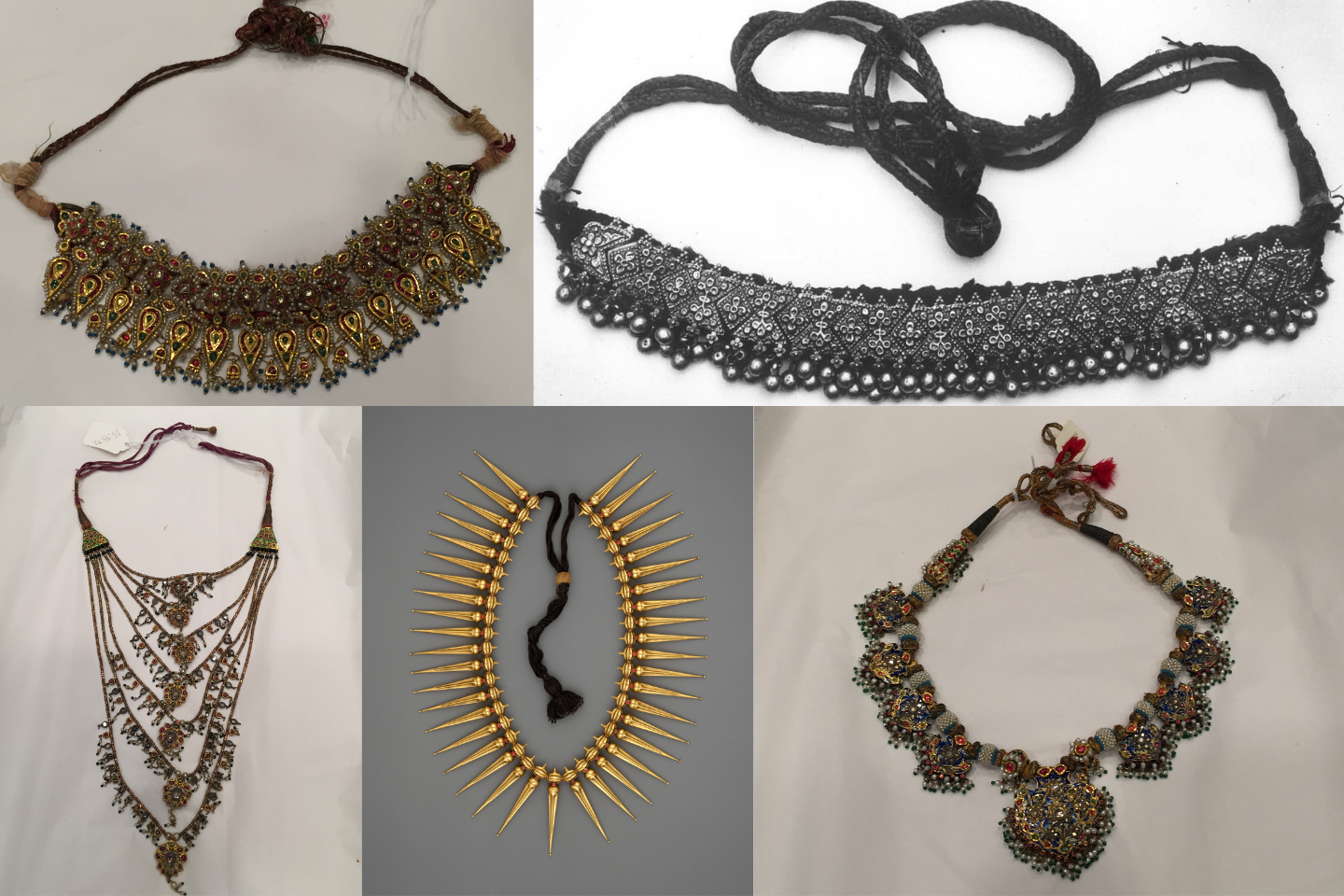If somebody were to ask you to name a few culturally diverse countries, India would definitely make it to the list. As diverse as its culture is, so is its jewelry, with different regions having different traditional jewelry with their own unique features and stories. In this blog, we take a look at some of the traditional Indian necklaces from different regions across the country.
Indian Necklaces Across Different Regions
Indian jewelry is made up of a huge and intricate variety of wonders. Traditional jewelry, which has a unique cultural identity, is an important and intriguing part of what makes the Indian civilization unique. Here are some traditional necklaces India’s different regions have given us.
From the West
Aadh

Rani Shri Usha Deviji Sahiba of Jodhpur. Image courtesy: Royal Archives via Twitter
A traditional Indian necklace from Rajasthan, the Aadh comprises two main components—the choker-like centerpiece and a curtain-like mesh. It was created especially to suit the luxurious tastes of the Rajasthani queens, but it later became a staple of Rajasthani bridal jewelry.
Hasli

Image courtesy: The Met Museum
The Hasli derives its name from the Hindi word 'hansuli' meaning 'collar bone' because it rests on the collarbone of the wearer. The traditional Hasli is rigid and tapers towards the end in the form of a collar necklace. While some are symmetrical, others may have a pendant. Some also feature enameling on the back.
Javali Haar

Image courtesy: The Met Museum
This magnificent gold necklace for women, finding its roots in Gujarat, is typically given to a new mother as she begins the fantastic journey of motherhood. The traditional style is influenced by natural shapes and grains (javali) made of gold that are strung on a gold chain and represent luck, happiness, fertility, and abundance.
Kaliganthi

Image courtesy: The Met Museum
The name "Kaliganthi'' is derived from the form and significance of this bridal necklace which is that of an amulet, where the amulet or “dodi'' suggests the individual units made of gold filigree and decorated with pearls and gemstones strung into a necklace.
Kolhapuri Saaj

Image courtesy: Wikipedia
It is a customary gold necklace for women from Maharashtra, and its name comes from the renowned city of Kolhapur. It features the "saajh ghat" as its main pendant in the center, surrounded by a series of imprinted sacred symbols such as the 10 incarnations of Lord Vishnu. The traditional necklace design typically has 21 leaves or pendants, but modern designs feature 10 to 12 pendants.
Pankhi Haar

Image courtesy: The Met Museum
The Pankhi Haar is a sophisticated necklace that evolved during the Mughal reign. The design includes elements of nature or motifs of Sri Nath Krishna. It consists of a single chain to which multiple pankhis (fan) pendants are hooked. There is usually an odd number of Pankhis so that a central, larger one hangs in the middle.
Thussi

Image courtesy: The Met Museum
The Thussi is one of a plethora of Indian necklaces that Marathi women traditionally don. Brides and married ladies wear thushis during weddings, festivals, and other celebrations. This choker-style Indian bridal necklace has a very local design and complements the traditional attire well.
From the South
Just like the west, the South is also rich in different traditional Indian necklace designs. Being the golden land of the country, the necklaces with their roots in the South are mostly crafted in gold, turning out to be magnificent, timeless objects of grandeur. Let’s take a look at a few such gold necklaces for women:
Guttapusalu

Image courtesy: Van Gelder Traditional Indian Folk Jewellery via Alain.R.Truong
The Guttapusalu Haram, as it is traditionally known, is a unique heritage gold necklace for women from Andhra Pradesh that originates from the Coromandel. The words "gutta" in Telugu means "groups of small fish" and "pusalu" in Telugu translates to and "beads". The most striking characteristic of the Guttapusalu necklace is the abundance of pearls it exhibits.
Kasu Malai

Image courtesy: Saffron Art
The Kasu Malai is made by stringing identical coins very closely, often engraved with motifs, and is an important part of the wedding trousseau. Each coin’s engraving could signify something different - the time period it was stamped, the auspiciousness of Goddess Lakshmi, or the beauty of flora and fauna. In the north, the Kasu Malai is known as the Asharfi Haar, and as Pahi Haar in the west.
Lakshmi Haar

Image courtesy: Manini’s
A Lakshmi Haar is a long gold necklace for women with a jewel-encrusted pendant that features a delicately engraved image of the goddess Lakshmi flanked by peacocks or elephants and set with precious gemstones. The goddess symbolizes money and success.
Makara Kanti

Image courtesy: Alain.R.Truong
A piece of traditional jewelry of Tamil Nadu, the name of the Makara Kanti necklace originates from the tale of the fabled sea monster known as the "makara" in Hindu mythology. This prominent jewelry is worn at ceremonial events.
Malligai Arumbu Malai

Image courtesy: The Met Museum
The Malligai Arumbu Malai, or the Jasmine Bud necklace is a gold necklace for women and is native to the state of Tamil Nadu. It comprises jasmine bud elements with tapering extensions and is inset with ruby.
Manga Malai

Image courtesy: Saffron Art
Sometimes referred to as the temple jewelry of the South, the Manga Malai is a hefty wedding gold necklace for women, with precious gemstones such as rubies and diamonds set using the kundala-velai technique. The Manga Malai consists of 46 pendants in the shape of mangoes secured by two flat crocheted gold wire chains that fit through loops on the back of the pendants.
From the North
Though known more for its jewelry-making techniques than actual pieces, the northern region still has a couple of Indian necklaces to its name, such as the ones listed below:
Katesari

Image courtesy: Etsy
The Katesari necklace is a type of choker necklace from Uttar Pradesh. It is often crafted of silver and consists of pieces with a foil-backed clear glass stone with an auspicious red dot in the center.
Satlada

Image courtesy: The Met Museum
The Satlada necklace is a seven-strand pearl necklace, increasing in length consecutively, made with pearls and pendants. Most modern versions of the Satlada have a varying number of pearls with diamonds and other gemstones, with each strand acting as an independent necklace with its own pendant.
Panchlada

Image courtesy: The Met Museum
The Panchlada necklace is a variant of the Satlada, in that instead of seven strands, it features five strands made of pearls and pendants. Another variant is the Teenlada necklace, which, as its name suggests, has three strands instead of five or seven.
From the East and North-East
The eastern region of India, especially the North-East, is mostly known for its tribal jewelry. Below are some traditional Indian necklaces that find their home in the eastern and north-eastern region of India:

Traditional jewelry of Arunachal Pradesh. Image courtesy: Time8
Arulaya
The Arulaya necklace is the most common necklace worn by the people of the Idu Mishmi tribe in Arunachal Pradesh. It comprises a string of beads numbered between forty and sixty.
Lekapon
Lekapon is another common necklace belonging to the Idu Mishmi tribe, which features twenty strands of beads.
Dholbiri

Image courtesy: Munmun Dey via Medium
This traditional Assamese necklace takes its inspiration from the Dhol, a musical instrument, hence the name. It is regarded as one of the most well-liked jewelry among Assamese women.
Disclaimer: Some of the images have been sourced from Google/Pinterest. If you are the owner, please write to us and we will credit appropriately, or you can request for a removal.
